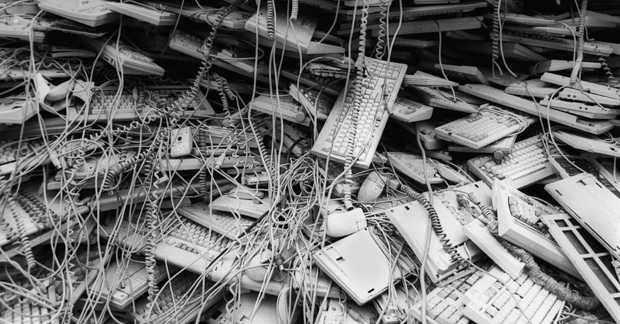Global electrical waste, also known as e-waste, will increase by one third to 65.4 million tonnes by 2017, according to a new report and an interactive map by industry, science organizations, governments and the United Nations.
China and the United States produced the most e-waste.
By the end of 2017, all products with a battery or electrical cord – computers, monitors, TVs, refrigerators, e-toys, etc. – that are discarded could fill a line of 40-ton trucks that would go three-quarters around the world along the Equator.
The study, “Solving the E-Waste Problem (StEP) Initiative”, predicts that over a five-year-period electrical waste will increase by 33%.
In some parts of the world efforts to re-use or recycle the components of e-products have improved. However, most of them are still destined for disposal.
New interactive map illustrates electrical waste problem
The growing worldwide problem of electrical waste is graphically portrayed in the Step E-Waste World Map, an interactive map resource that provides comparative yearly data from 184 nations regarding electrical and electronic equipment and how much of it is recycled or destined for disposal.
The aim is to get governments and companies to better plan electrical waste management.
According to the map, 48.9 millions tonnes of electrical and electronic products were produced in 2012 – the equivalent of 7 kilograms (15.4 lbs) per person worldwide.
The flood of electrical waste is progressively growing. StEP experts forecast that the equivalent of 11 Great Pyramids of Giza or 200 Empire State Buildings in e-waste will have accumulated by 2017.
Ruediger Kuehr, of United Nations University and Executive Secretary of the StEP Initiative, said:
“Although there is ample information about the negative environmental and health impacts of primitive e-waste recycling methods, the lack of comprehensive data has made it hard to grasp the full magnitude of the problem.”
“We believe that this constantly updated, map-linked database showing e-waste volume by country together with legal texts will help lead to better awareness and policy making at the public and private levels.”
Global electrical waste, the equivalent of 200 Empire State Buildings.
Electrical waste highest in the US and China
According to the StEP e-waste world map, the US and China in 2012 led the world’s markets for e-waste and electrical and electronic equipment (EEE). China put 11.1 million tons of EEE on the market and the US 10 million tons.
As far as electrical waste was concerned, in 2012 the US came top with 9.4 million tonnes and then China with 7.3 million.
E-waste per person, however, was much higher in the US (29.8 kg) than in China (5.4 kg).
Jane Nishida, Acting Assistant Administrator, US-EPA Office of International and Tribal Affairs, said:
“EPA partnered with the United Nations University’s Solving the E-waste Problem (StEP) Initiative understanding that the growing e-waste problem can only be addressed effectively when we have better information on the global flows of used electronics.”
“We are pleased that StEP, working with the Massachusetts Institute of Technology and the National Center for Electronics Recycling, was able to deliver a report that provides a scientific-based approach to generating information on US exports of used electronics.”
Kazuhiko Takeuchi, UN Assistant Secretary General and Senior Vice-Rector, United Nations University, said:
“As global think tank the mission of the United Nations University (UNU) is to contribute, through collaborative research and education, to efforts to resolve the pressing global problems of human survival, development and welfare that are the concern of the United Nations, its peoples and member states.”
“The e-waste challenge is among these problems and UNU is committed through its research and also through coordinating the Solving the E-waste Problem (StEP) Initiative to provide science-based but applied recommendations to policy makers in governments and industry. And knowing and understanding the magnitude of the issue is key.”

